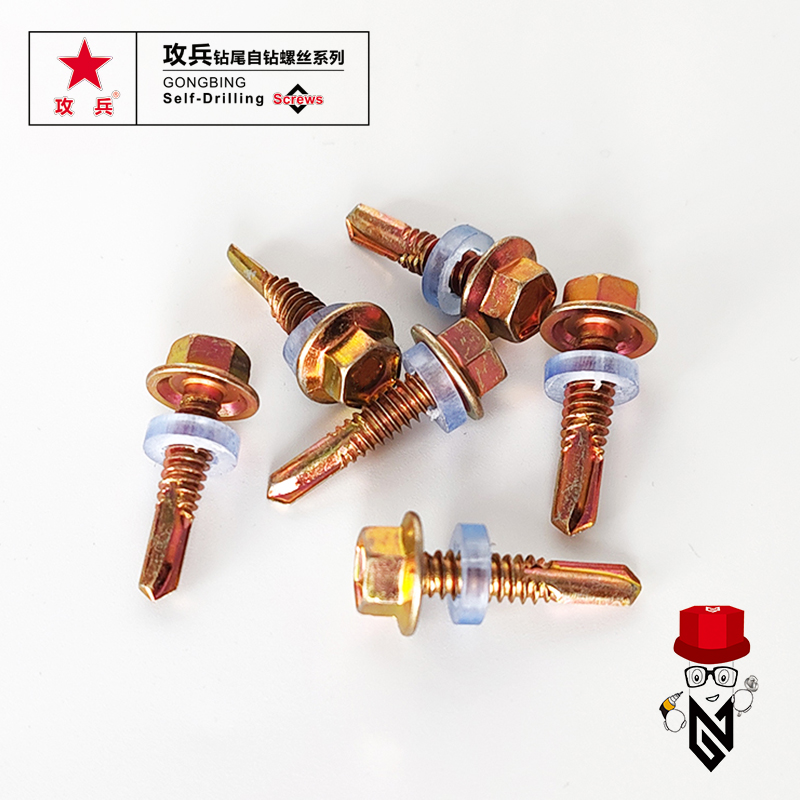Jan . 09, 2025 13:55
Back to list
Nylon Hex Head Self Drilling Screw
Self-drilling screws, an essential component in various construction and manufacturing industries, offer unique attributes ideal for efficiently securing materials. These screws eliminate the need for pre-drilling, reducing the steps in fastening processes and enhancing productivity. Their application spans from household repairs to large industrial projects, underscoring their versatility. Choosing the right type of self-drilling screw is critical for ensuring the durability and longevity of the construction work.
Pan head self-drilling screws offer a broader surface contact due to their rounded top. This makes them suitable for securing thin metals or plastics. The pan head holds the material firmly in place without piercing through the softer substrates, providing a secure bond without material damage. This feature is particularly beneficial in electronic or automotive industries, where precision and care with materials are imperative. The wafer head self-drilling screw is another variant worth noting. With its low-profile head, it offers minimal protrusion above the surface, ideal for applications where space is limited, or a low-snag finish is desired. Its application ranges from HVAC installations to fine trim work in cabinetry, demonstrating its adaptability across industries. Finally, the structural self-drilling screws are designed for heavy-duty applications, featuring a stronger shank and tip. These screws are utilized in large-scale construction projects, providing critical support in structural steel connections. Their high resistance to shear and tension stresses highlights their engineering excellence, supporting expansive structures that demand robustness and integrity. In essence, the diversity of self-drilling screws available allows for tailored solutions across a myriad of applications. Selecting the appropriate screw type requires an understanding of both the material and the specific requirements of the task at hand. Collaborating with industry experts or referencing manufacturer's guides can enhance the decision-making process, ensuring the selected screws meet the performance needs and safety standards required. These considerations further establish the reliability and trustworthiness of self-drilling screws in modern construction and manufacturing settings, cementing their status as indispensable tools.


Pan head self-drilling screws offer a broader surface contact due to their rounded top. This makes them suitable for securing thin metals or plastics. The pan head holds the material firmly in place without piercing through the softer substrates, providing a secure bond without material damage. This feature is particularly beneficial in electronic or automotive industries, where precision and care with materials are imperative. The wafer head self-drilling screw is another variant worth noting. With its low-profile head, it offers minimal protrusion above the surface, ideal for applications where space is limited, or a low-snag finish is desired. Its application ranges from HVAC installations to fine trim work in cabinetry, demonstrating its adaptability across industries. Finally, the structural self-drilling screws are designed for heavy-duty applications, featuring a stronger shank and tip. These screws are utilized in large-scale construction projects, providing critical support in structural steel connections. Their high resistance to shear and tension stresses highlights their engineering excellence, supporting expansive structures that demand robustness and integrity. In essence, the diversity of self-drilling screws available allows for tailored solutions across a myriad of applications. Selecting the appropriate screw type requires an understanding of both the material and the specific requirements of the task at hand. Collaborating with industry experts or referencing manufacturer's guides can enhance the decision-making process, ensuring the selected screws meet the performance needs and safety standards required. These considerations further establish the reliability and trustworthiness of self-drilling screws in modern construction and manufacturing settings, cementing their status as indispensable tools.
Next:
Latest news
-
Weatherproof Plastic Expansion Anchors for OutdoorNewsJun.06,2025
-
Sustainability in the Supply Chain: Eco-Friendly TEK Screws ProductionNewsJun.06,2025
-
Load-Bearing Capacity of External Insulation FixingsNewsJun.06,2025
-
Double Head Bolts: Enhancing Efficiency in Industrial MachineryNewsJun.06,2025
-
Corrosion Resistance in Chipboard Screws: Coatings for Wholesale DurabilityNewsJun.06,2025
-
Butterfly Toggle Bolts : Enhancing Structural ResilienceNewsJun.06,2025
